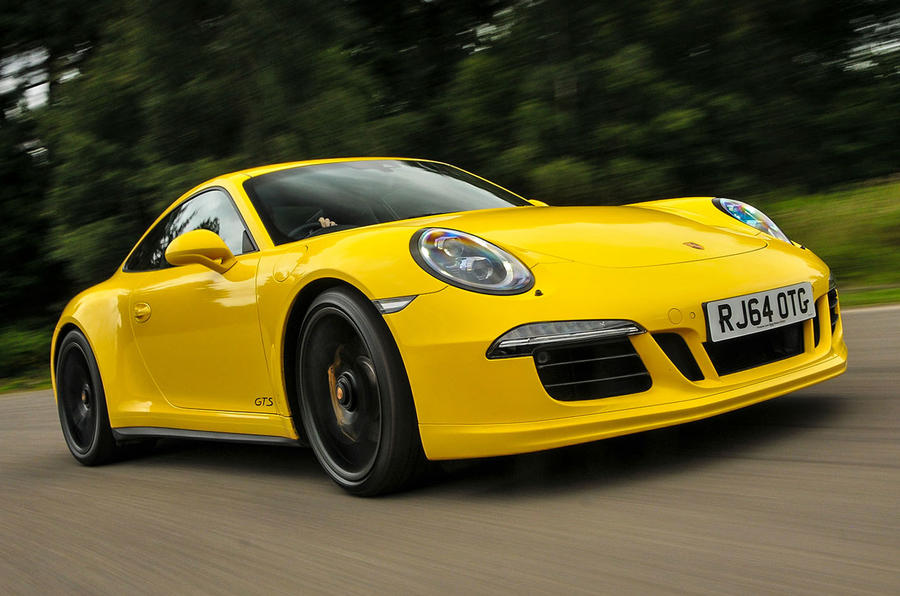What is it?
A fettled, faster, more distinctive version of the naturally aspirated Porsche 911 Carrera. Unfortunately, following the launch of the new turbocharged Carreras on 7 September, it’s also a car that currently no longer exists on the new market.
Still, it’s worthy of further investigation. After all, there are numerous nearly new examples in the classifieds and, more importantly, the GTS is – or was, more accurately – one of the rapidly diminishing number of turbo-free Porsches.
It was developed to offer buyers more punch, poise and pose factor than a Carrera S, without the compromises that they’d otherwise have to endure in the track-orientated GT3. The GTS still has four seats and a decent kit list, for example, and it’s available with manual or PDK dual-clutch automatic transmission and the option of four-wheel drive.
Prices for the GTS also straddle the divide; when it was launched it was some £10k cheaper than a new GT3, but £7.5k more costly than a Carrera S. You get a lot of extra kit for your money, so it’s not an unjustified premium.
First and foremost is the fitment of Porsche’s Powerkit, granting a hike of 30bhp over the standard Carrera S and bringing total output to 424bhp. This is achieved via a completely redesigned intake system, smoothed intake ports in the heads, reprofiled intake cams and new valve springs. All of this bolsters the engine’s volumetric efficiency, granting it more power, while its acoustics have been improved considerably with the addition of a sports exhaust system.
The underpinnings have received upgrades, too. The GTS, even in two-wheel-drive form, benefits from the wider rear track of the all-wheel-drive 911, in order to improve stability. Porsche’s active damper system, known as PASM, also makes it onto the list. This represents another upgrade over the Carrera S, and the GTS additionally sits 10mm lower. This is all wrapped up with the addition of torque vectoring and a series of steering and suspension tweaks, aimed at delivering a more engaging drive than the standard 911.
Refining the Porsche’s capabilities further is the fitment of the Sport Chrono package, which includes dynamic engine mounts. These improve traction and thus acceleration by cutting the engine’s vertical movements under heavy loads, helping stabilise the rear axle and resulting in more uniform traction.
Inside you’ll find bespoke Alcantara trim and sports seats, while the exterior benefits from the wider Carrera 4 bodywork. Smart, matt black forged aluminium 20in centre-lock wheels and other black details complete the look. Suffice to say that it’s a fine-looking machine. Specifying a Carrera S to a similar extent would cost within a few grand of this, but you won’t have the wide body kit, the additional power or interior tweaks.
This particular example of Porsche’s ‘Gran Turismo Sport’ 911 is the most expensive of the GTS line, commanding a not insignificant £98,679 thanks to the fitment of PDK and four-wheel drive.
Alarmingly, that’s before options. All in, once you’d accounted for this test car’s ceramic discs, sports bucket seats, leather trim and myriad other upgrades, it would set you back £114,005. Still, that’s some £35k less than a nearly new GT3, the prices of which have shot through the roof due to their desirability and rarity.





























Join the debate
Add your comment
0 - history in record time